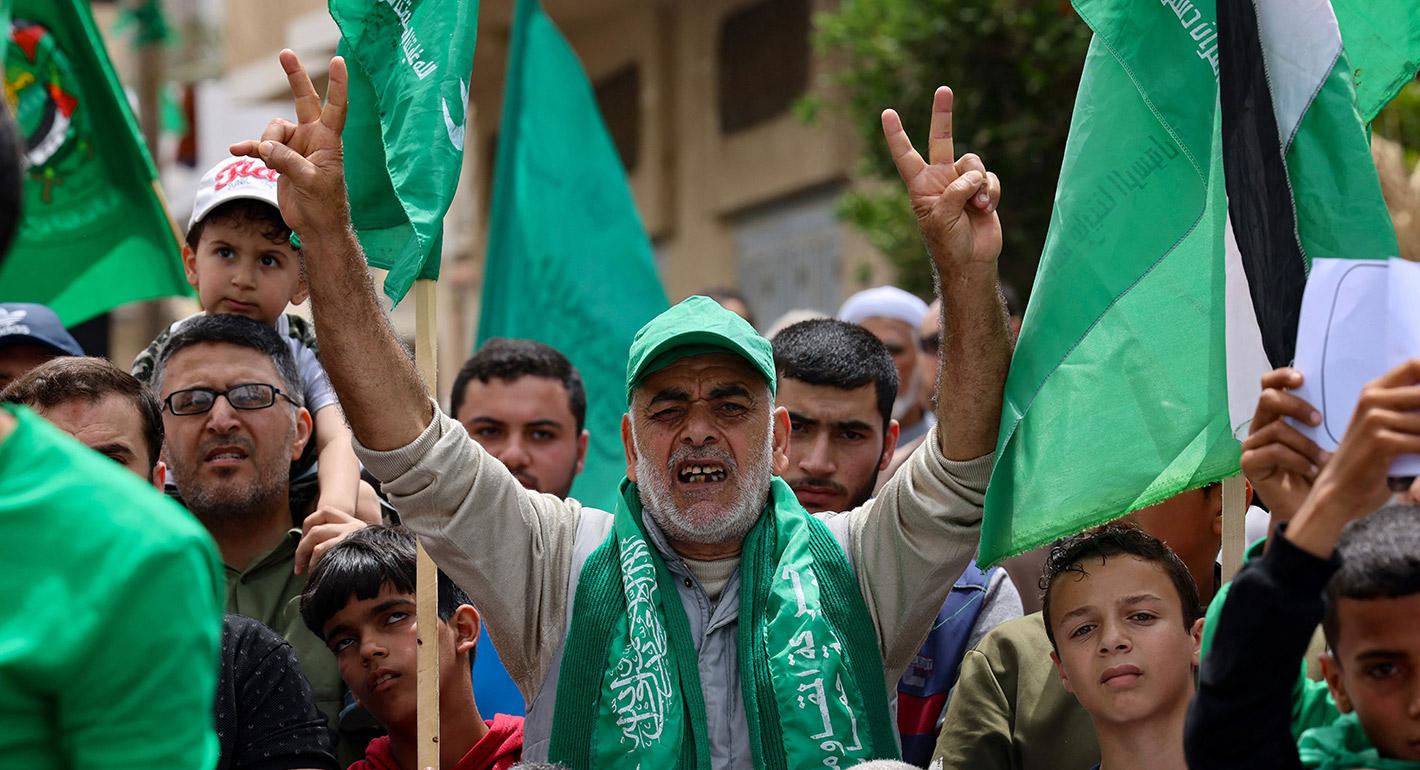On May 9, Israeli airstrikes in the Gaza Strip launched one of the deadliest confrontations between Israel and the militant group Palestinian Islamic Jihad (PIJ). Five days later, after 34 Palestinians and one Israeli had been killed, an Egyptian-mediated ceasefire put a temporary end to the hostilities.
The Israeli offensive was exclusively aimed at PIJ: Israel carried out what it called the “targeted killing” of three senior commanders in the military wing of the movement, and destroyed dozens of its rocket silos, mortars, and tunnels across Gaza.
According to local observers, Israeli motives for intensifying pressure on PIJ went beyond merely satisfying the hardliners in the Netanyahu government and neutralizing a tactical threat to Israelis living near the Gaza border. The attacks also were calculated to drive a wedge between Hamas and PIJ, and to demonize PIJ in eyes of the Gazans. Israel hoped that a military confrontation with PIJ would further fragment the Palestinian factions and escalate public discontent against PIJ—as the group would appear as responsible for the disruption of daily life and widespread suffering across Gaza—and ultimately lead to a popular revolution.
Hamas, the governing authority in Gaza, was put in the delicate position of having to choose between engagement and nonintervention. While the former could jeopardize its authority and expose its leadership to the risk of assassination, the latter could undermine its local credibility. In the end, throughout the five-day assault, Hamas was conspicuously absent. Although Hamas officials did claim to support PIJ against Israel through the “joint operations room” of Palestinian political factions, this was not enough to convince close observers or shape public opinion in its favor.
Hamas continued to refrain from military action on May 18 during the “Jerusalem Day” flag march, when far-right Israeli nationalists marched through the occupied city. This provocative annual event was met only with the usual statements of condemnation: Hamas’s leader Yahya Sinwar promised retaliation if Israel “violated” the Al-Aqsa Mosque, and the march passed without any military engagement.
This ongoing absence has raised questions about the motives behind Hamas’s self-imposed neutralization, and whether these motives stem from actual convictions or from political calculations and internal shifts within the movement. The fact that Hamas had opted to abstain from the two previous confrontations between Israel and PIJ in 2019 and 2022 seems to indicate that the Hamas-Israel relationship is taking a new turn.
No longer guided solely by the principle of military resistance, Hamas’s attitude towards Israel is now determined by a cost-benefit calculus. This has allowed Israel to enjoy greater calm in the areas surrounding Gaza, while securing Hamas as the sole authority in the Strip. It has also facilitated financial support for Hamas, with Israeli approval, which allows it to grant thousands of Gazan workers and merchants Israeli work permits.
This transformation in Hamas’s position is not a sudden change or a direct outcome of confrontation with Israel over the past five years. It is rather a gradual development in its strategy as a political movement, as it has become more fully involved in the turbulent Palestinian political system. This is evident by its political participation under the framework of the Oslo Accords—despite initially opposing the agreement—and its indirect negotiations with Israel, which Hamas still doesn’t recognize. Like the Palestine Liberation Organization (PLO), Hamas is now content to adopt a peaceful resistance approach and accept the idea of a phased solution to the Palestinian-Israeli conflict as a basis for a political settlement.
Going forward, Hamas is reevaluating its strategy and leaning towards a permanent truce that could lead to direct negotiations with Israel, just as the PLO once did in response to international and regional changes. Hamas seems to be concluding that the best way to overcome the political and security crisis in Gaza, while ensuring its continued authority over the enclave, is to recall the vision of its founder Ahmed Yassin and accept a “phased liberation” of the occupied territory. Moussa Abu Marzouk, a senior Hamas official, reiterated this vision when he said that his movement may seek to negotiate with Israel, claiming that Islamic faith does not prohibit such contacts.
In the end, the movement will be required to determine its position: either it can continue to be the face of Palestinian resistance, or it can follow the trajectory of the PLO and the Palestinian Authority and merely maintain the option of armed confrontation, while refraining from actual military operations.
Azzam Shaath, a writer and political researcher based in Gaza, holds a PhD in public law and political science from Mohammed V University in Rabat.






